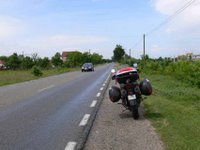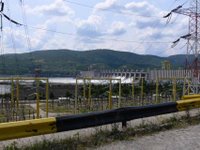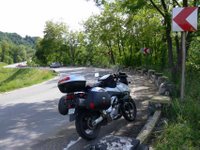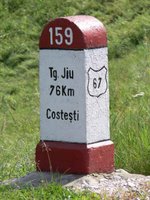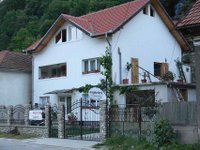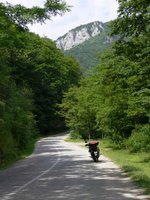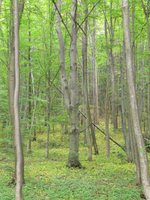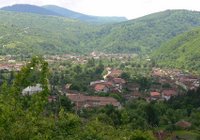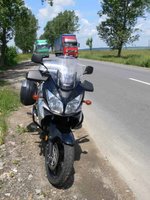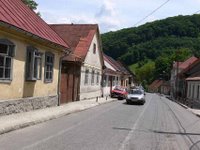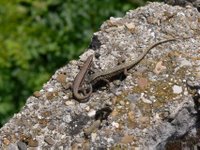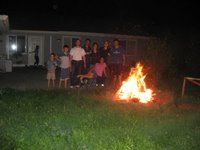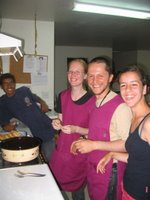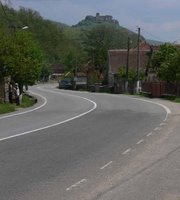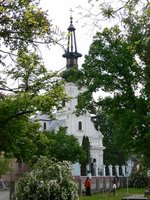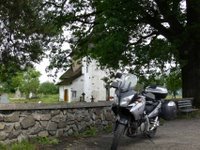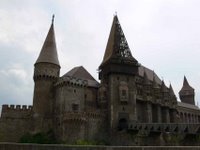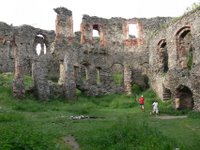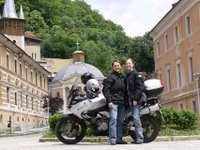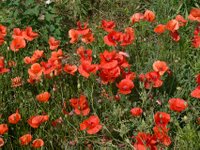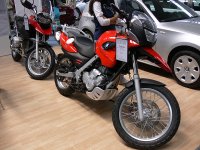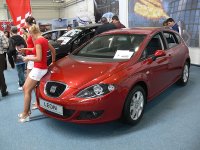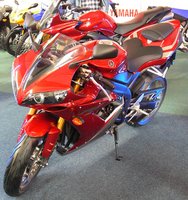After riding through the mountains from Resita to Anina and then on to Oravita, we were in for quite a pleasant surprise when we approached
Moldova Noua. Even before reaching the town, we were offered a fantastic panorama of the great Danube.
The Danube is the natural border between Romania and both Serbia and Bulgaria. The river has been a natural resource, a navigation route, a tourist attraction, a subject for many songs and poems, and a challenge for centuries.
With only 100 kilometers from Moldova Noua to Orsova, we were confident that we could enjoy
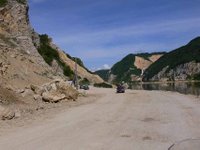
the ride along with photographing the scenery – little did we know that it would take us
four hours! We took this scenic road not long after a series of floods and terrain slides washed out entire sections. At the time, there were crews strewn about the whole length working on drainage and road repairs. So, we never quite knew what the next bend would bring - we rode on a nice section for a little while, only to be thrown into long stretches with dirt, gravel, bulldozers, and not to mention, potholes.
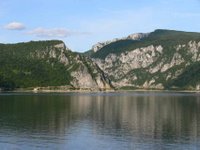
However, while mindful of the road, we were absolutely taken by the splendid views. The water, the mountains, the lush forests, the road and the perfect weather conspired to create a magical experience. We had to frequently remind ourselves that we were photographing Romania, a country known (if at all) for dingy industrial towns, orphanages and a communist past. Yes, Romania can be a magical experience and a land of breathtaking beauty, charm and enjoyment! We most certainly found what we came here for - and much more.
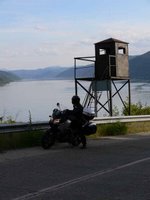
As many European countries, Romania is a place where past and present coexist, at times awkwardly, at other times pleasantly blended. The rusty, steel border patrol look-out was a reminder of the days when the political system was as much concerned about keeping enemies at bay, as it was busy keeping its people from escaping. Particularly during the 80s, many Romanians lost their lives attempting to swim across the Danube to Serbia, and from there to Western Europe or North America seeking freedom and a better life.
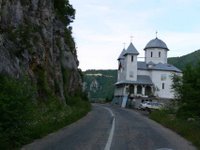
The road’s scenic qualities were comparable to the US Pacific Coast Highway. The contrast was the unspoiled natural beauty not yet given an exclusive price tag. We saw families camping roadside, men fishing on the banks, people riding bicycles from town to town. At the
Cazanele Mici gorges, there was even a church squeezed by the side of the road between the rocks—not quite a drive-in religious experience, but quite close to it!
The beauty of this part of the country is only matched by the friendliness of the people. These
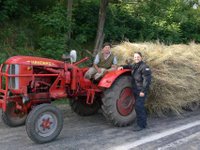
are open and approachable folks, who seem to have a ready smile and an available moment for a question or a chat. Unlike other parts of Romania we’ve ridden through where only children might wave as we pass, here even adults would wave or nod as we crossed through towns. During a break to stretch and photograph the
ruins of Tricula Fortress, we even met the postman of Svinita heading home with his tractor and a double load of hay. In between questions about the bike and our trip, he mentioned that he had an old bike with only 7,000 kilometers on it, that he took out a couple of times a year and enjoyed riding it.
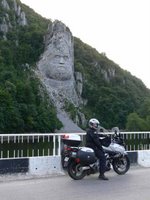
The road is part of the
National Park of the Iron Gates which comprises an area of 115,000 hectares. The park boasts a unique flora and fauna that is protected and preserved. Seeing tourists and cars, we happened upon what looked like the Romanian Mount Rushmore! A face carved into the side of a rock on the mountain – King Decebal. Decebal was the last king of the tribes which inhabited the teritorries north of the Danube before Roman conquest. Decebal is celebrated as a hero for valiantly resisting the forces of Emperor Trajan in the 2nd century BC. He was eventually defeated after Trajan comissioned the great architect Apolodor of Damascus to build a bridge across the Danube to carry the Roman troops.
After experiencing the spectacular Cazan Gorges, we rode into
Orsova as the sunset was setting. – BGR
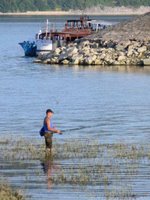
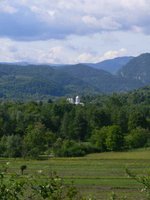
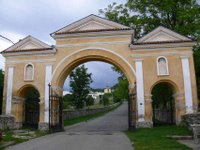 the carved pearwood doors and ten-pillared porchway, the focal point was the Great Church built in 1693. Indeed, the Western and Oriental architectural style of Brancoveanu can be witnessed here. We learned that the country’s most prestigious fresco painting school was here in the 17th and 18th centuries. On an interesting note, we were departing when two German motorcyclists arrived in search of lodging. The monastery has 20 rooms available for guests.
the carved pearwood doors and ten-pillared porchway, the focal point was the Great Church built in 1693. Indeed, the Western and Oriental architectural style of Brancoveanu can be witnessed here. We learned that the country’s most prestigious fresco painting school was here in the 17th and 18th centuries. On an interesting note, we were departing when two German motorcyclists arrived in search of lodging. The monastery has 20 rooms available for guests. Ten kilometers from Horezu was another Brancoveanu-style structure, the Bistrita Monastery (1856). Until the early 80s, the monastery was home to one of the country’s largest schools for handicapped children.
Ten kilometers from Horezu was another Brancoveanu-style structure, the Bistrita Monastery (1856). Until the early 80s, the monastery was home to one of the country’s largest schools for handicapped children.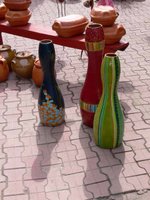 best known for its pottery.The plates are especially popular with their greys, blues, greens, and burnt yellows. Throughout the region, there are small shops as well as pieces displayed for sale along the roadside in front of homes. Fortunately, we had a bit of space for a few treasures (well wrapped) in the luggage!
best known for its pottery.The plates are especially popular with their greys, blues, greens, and burnt yellows. Throughout the region, there are small shops as well as pieces displayed for sale along the roadside in front of homes. Fortunately, we had a bit of space for a few treasures (well wrapped) in the luggage!